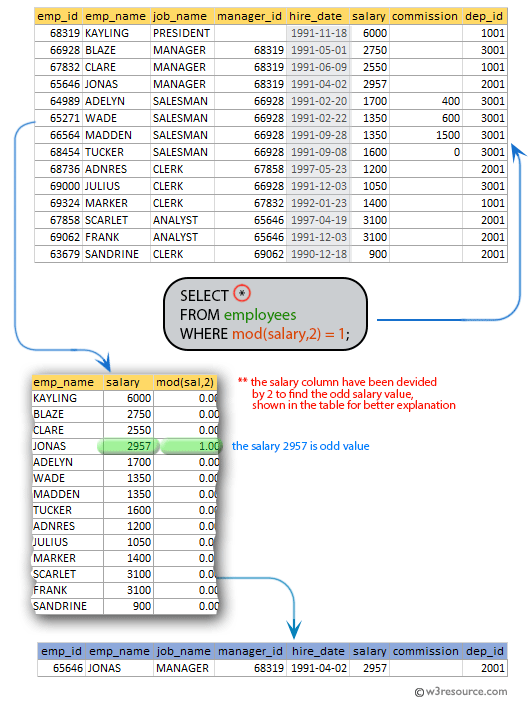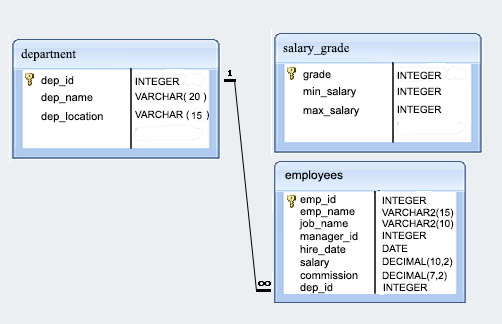SQL Exercise: List those employees whose salary is an odd value
[An editor is available at the bottom of the page to write and execute the scripts.]
31. From the following table, write a SQL query to identify the employees whose salaries are odd. Return complete information about the employees.
Sample table: employees
Pictorial Presentation:
Sample Solution:
SELECT *
FROM employees
WHERE mod(salary,2) = 1;
Sample Output:
emp_id | emp_name | job_name | manager_id | hire_date | salary | commission | dep_id --------+----------+----------+------------+------------+---------+------------+-------- 65646 | JONAS | MANAGER | 68319 | 1991-04-02 | 2957.00 | | 2001 (1 row)
Explanation:
The said query in SQL that selects all fields from the employees table where the salary field is an odd number.
The mod() function returns the remainder when the salary field is divided by 2. If the remainder is 1, it means that the salary is an odd number.
The WHERE clause filters the results to only include rows where the salary is odd.
Go to:
PREV : Employees retiring after 31-Dec-99 after 8 years.
NEXT : List those employees whose salary contain only 3 digits.
Practice Online
Sample Database: employees
Have another way to solve this solution? Contribute your code (and comments) through Disqus.
What is the difficulty level of this exercise?
Test your Programming skills with w3resource's quiz.


